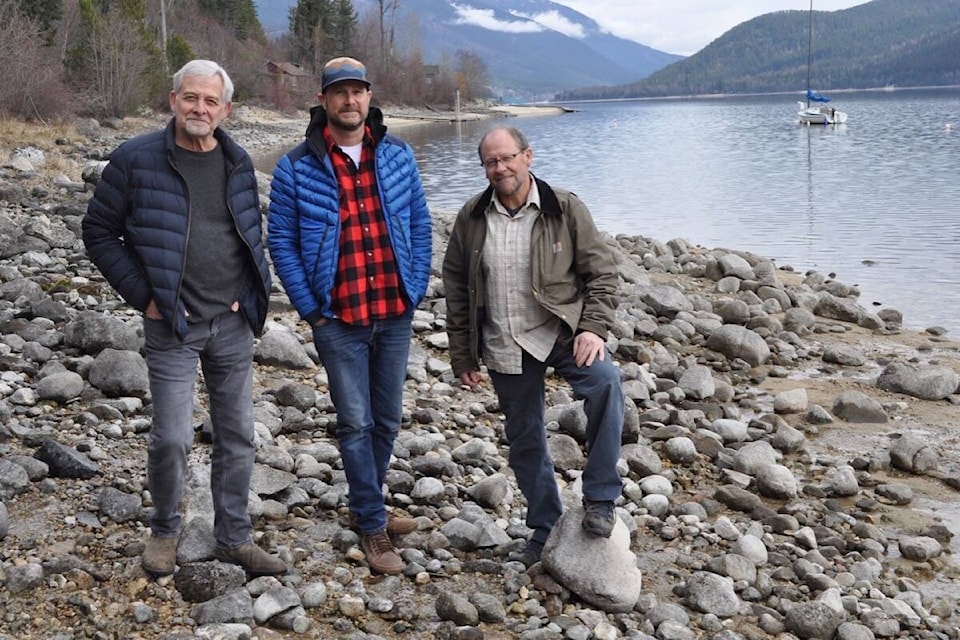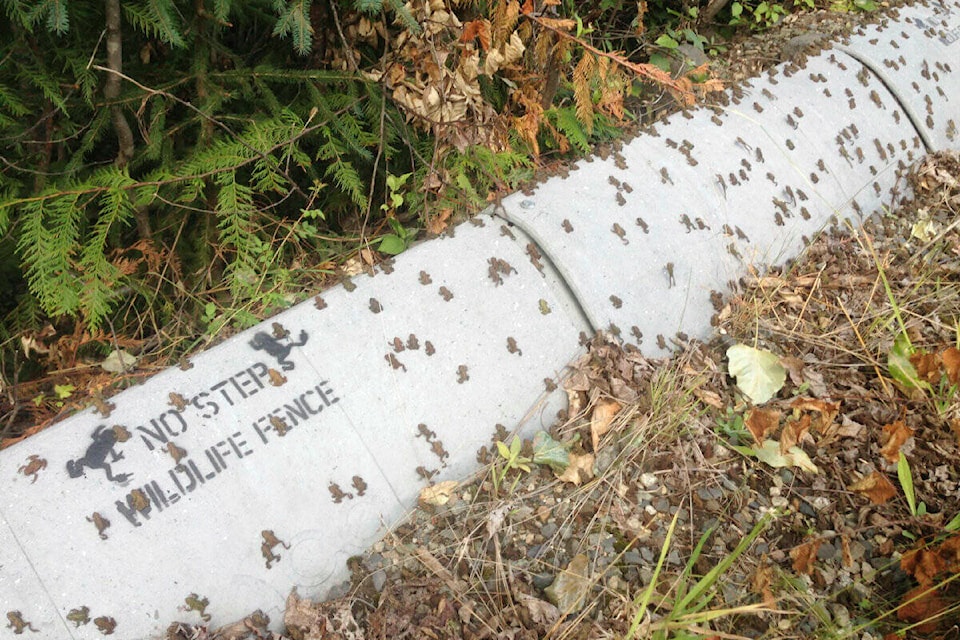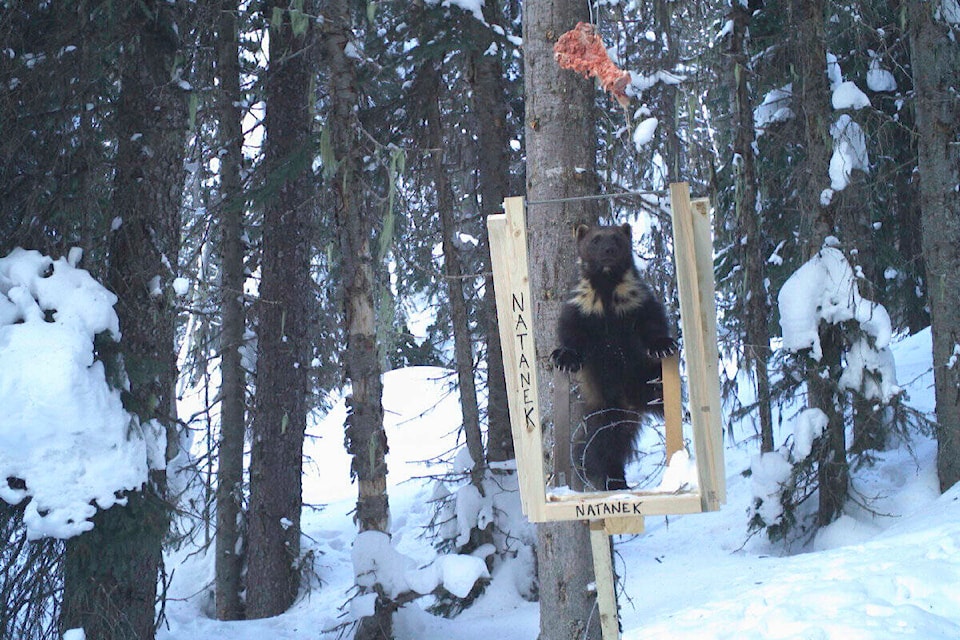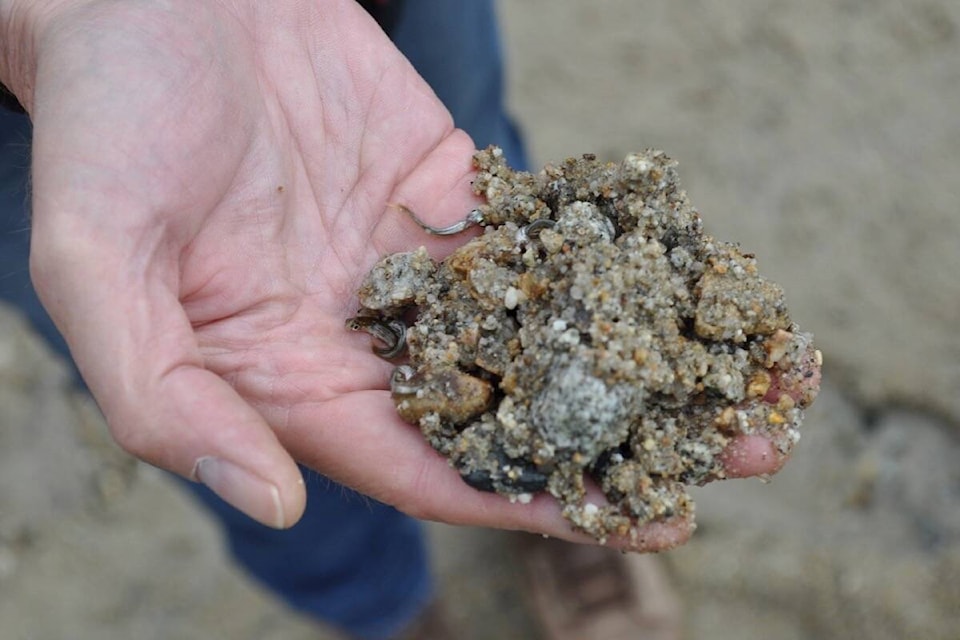In part three of this four-story series, we look at what the reduced snowpack means for the West Kootenay’s wildlife. In case you missed them, read part one on , and part two on .
Gary Munro scoops up a clump of wet sand on the shore of Kootenay Lake. In his palm, Kokanee fry no bigger than a couple centimetres wriggle around.
At McDonalds Landing regional park on the lake’s west arm, Kokanee are spawning on the shore. They set up their redds, or spawning pools, on the beach, then fry emerge from eggs in late February or early March and swim into the lake.
But that’s also when the water has been drawn down to its lowest levels by dams, leaving the fry stranded on the beach until the water is allowed to rise again in April.
Munro, a retired fisheries technician who worked on Kootenay Lake for 30 years, doesn’t like their chances for survival with a reduced snowpack and what he says can be rigid thinking about how the lake’s dams are operated.
“I’m looking at the water and reading the snowpack percentage and thinking … you’re killing all these fish.”
The snowpack, which was recorded by the BC River Forecast Centre at just 72 per cent of normal for the West Kootenay on April 1, is impacting the region’s wildlife in a variety of ways.
Kootenay Lake is partially fed by glacier melt, but it doesn’t rise naturally with the freshet. That is determined every year by the International Kootenay Lake Board of Control, which consults with the hydroelectric companies that run Kootenay Rivers’ dams to decide on when water levels should decline in the fall and rise in the spring.
On April 16, the board announced it would begin the spring rise of water levels from a low of 530.14 meters until the elevation reaches 531.3 metres at Nelson. It’s the earliest announced starting date for the rise in the past seven years, which the board said in a statement was due to sustained warm temperatures at high elevations and a melting snowpack.
Kokanee rely on streams and shores where there is reliably cold, oxygenated groundwater for their eggs. That water comes from snowpack melt, glaciers and precipitation.

Jeff Burrows, who retired last year as a senior fish biologist for the province, says shore spawners make up six per cent of the lake’s Kokanee population. That’s not much, but as warming temperatures impact stream flow and spawning channels, Burrows believes shore spawners will take on a greater importance to the species’ survival.
“Shore spawners are one of, in the near term, the climate change opportunities for Kokanee to persist in protecting and enhancing them.”
One of those measures takes place every three years in the fall when lake levels are drawn down for one month during a period of peak spawning. It encourages redds to be placed at lower elevations before the lake is allowed to refill. The hope is that less redds are stranded on the beach when water levels are at their lowest.
James Baxter, principal biologist and senior manager for the Sinixt Confederacy based in Nelson, believes the practice should be considered for annual implementation. As the snowpack continues to recede, Baxter wants to see more allowance for the changing climate in how lake levels are managed.
But, he concedes, that initiative has to come from hydroelectric companies.
“The biologists aren’t the ones who are controlling the water.”
Hopping back home
At Summit Lake near Nakusp, one of the West Kootenays’ most important ecological sites, the migration cycle begins in the spring for Western toads.
Adult toads return to the lake to lay their eggs in early May. But Jakob Dulisse, a wildlife biologist who specializes in reptiles and amphibians and has studied the Summit Lake toads since 2011, says he’s noticed a slow change in the pattern — the toads are starting to arrive earlier.
“They breed quite soon after the ice melts from the lake. … It’s variable, of course, but it is trending earlier.”
The Western Toad, which is common in the West Kootenay, as well as snake species such as garters and rubber boas burrow underground below the freezing level and rely on the snowpack for winter insulation.
Snowpack also contributes to wetter forests and wetlands, which amphibians need to breed. Painted turtles, another species Dulisse studies, spend winters in standing water. Turtles hatch in the fall, stay in their nest during the winter and emerge in spring. If there’s no snow over their nests, the hatchlings are vulnerable to cold temperatures.

For the time being, Dulisse says Summit Lake toads are more impacted by having to cross the nearby highway than by a melting snowpack. But he also thinks a warming climate will change the range for some species.
The Kootenays are the furthest north the Western skink will range, for example. Rattlesnakes and gopher snakes that don’t typically live further north than the United States border just south of Trail could also start appearing.
“With a warming climate, the ranges might change on some of these species,” says Dulisse. “The long-term climate models for this area, the Columbia Valley, especially for the south toward Trail and Castlegar, has a kind of conversion to more shrub land-grassland over time.
“So will those species come north? That’s an interesting question.”
The people problem
Every winter, Doris Hausleitner goes searching for an animal that doesn’t want to be found.
Since 2012, Hausleitner has made regular helicopter trips in the winter over the Kokanee, Monashee and Goat mountain ranges searching for wolverine dens.
Wolverines are difficult to track, but Hausleitner, an instructor at Selkirk College’s School of Environment and Geomatics, finds them fascinating.
“There’s so little known about the animal even though it’s a big animal out there. But it’s so hard to study, and they go out into the craziest, hardest to reach places. Somehow that really appeals to me.”
A heavy snowpack is vital to the wolverine population, which doesn’t hibernate. They dig tunnels into the snow and burrow underground where a litter of one-to-three kits are born in mid-February and don’t leave until about mid-May.
Wolverines also use the snow for refrigeration. They are scavengers, and when they find food like a freshly killed ungulate the wolverine stores it into the snow near the den. Snow doesn’t limit their movement either. Males can cover about 150 kilometres daily.
Hausleitner studies wolverines by using a bait system that takes pictures of the animals while also making note of regular den locations. She’s concerned by the diminished snowpack, which she says will lead to more intrusion on wolverine habitat by humans.

Instead of staying put, wolverines will move dens when humans are close. But doing so takes them away from their food cache, and makes the kits vulnerable to predators.
“If you can think about a mountain being like a cone, and as the snow moves higher up that cone you have a less area, you’re putting more people now in a diminishing area. So for an animal like the wolverine that just is not tolerant of humans, that is a huge impact.”
The snowpack is less vital for the West Kootenay’s biggest animal.
Nelson’s Garth Mowat studies bears as the provincial large carnivore specialist for the Ministry of Water, Land and Resource Stewardship.
A melting snowpack doesn’t directly impact bears’ hibernation, says Mowat, because the winter sleep is driven by their circadian rhythm and how much body fat they’ve stored. It can, however, cause a bear to wake if snow that covered a den melts off.
But Mowat downplays the extent to which snowpacks big or small matter to bears, which he says naturally den for less time in more southern habitats.
“There’s black and brown bear populations in places much drier than this.”
Snowpack can protect berries from frost, but Mowat says that doesn’t really apply to the black huckleberries they eat at lower elevations. Bears also tend to go where the food is even in a drought. During B.C.’s heat dome in 2021, Mowat observed bears eating huckleberries on the north-facing side of a mountain at higher elevations than he’d previously seen.
“So they were affected, but at the individual level they responded by saying, ‘well, south facing berries are burned off so we’re moving around to the north side of the mountain.’ The fact that bears are omnivores buffers them from annual effects from nature.”
Humans, Mowat says, matter more to the bear population than a declining snowpack. In poor berry crop years, black bears turn to cities for their food sources (this isn’t the case with grizzlies, who would rather keep their distance).
Keep the trash cleaned up and bears should be fine, he says, no matter how much snow has fallen.
MELTDOWN:
•
•




